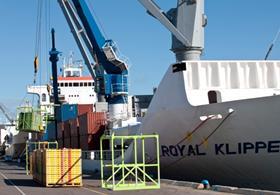
The New Zealand government has launched a new plan to boost the country’s primary sector export earnings by NZ$44bn (US$28.8bn) over the next decade, while protecting the environment and increasing employment.
Prime Minister Jacinda Ardern released the ‘Fit for a Better World – Accelerating our Economic Potential’ roadmap, which outlines how the country will place primary industries at core of New Zealand’s economic recovery post-Covid-19.
The action plan focuses on three key pillars; productivity, sustainability and inclusiveness. In the realm of sustainability, the plan reinforces the government’s commitment to reducing the country’s biogenic methane emissions as well as restoring New Zealand’s freshwater environments to a healthy state within a generation.
In inclusiveness, there are aims to employ 10 per cent more New Zealanders from all walks of life in the food and fibre sector by 2030, and 10,000 more New Zealanders in the primary sector workforce over the next four years.
New Zealand's horticulture industry is currently worth more than NZ$6.39bn annually, according to peak industry body, Horticulture New Zealand (Hort NZ). It employing approximately 60,000 people.
Ardern said it’s important the government remain proactive in its approach.
“The government is already backing parts of the roadmap with more than NZ$1.5bn invested in freshwater quality, water storage, supporting exporters, reducing agriculture emissions, assisting farmer catchment groups, the One Billion Trees scheme, getting people into sector jobs, rural sector resilience and developing new high-value crops,” said Ardern.
The country’s agriculture minister, Damien O’Connor, highlighted the sector’s ability to record 4.5 per cent growth over the last 12-months, despite Covid-19, showed there was significant demand for New Zealand produce.
“[It’s important] We… act quickly and boldly [as we] can’t continue to rely on volume growth to generate greater returns,” explained O’Connor.
“We need to create new billion-dollar, category-leading products services for consumers here and overseas, while respecting Te Taiao – the natural world,” he added.
The roadmap will be rolled out over the coming months, and O’Connor said it will take close partnership with industry and Māori for it to succeed.
HortNZ president, Barry O'Neil, said the plan aligns well its current future focused strategies. “Horticulture is already well into the journey that has been identified and proposed in these reports, and this journey will continue.'
“Immediately post lockdown, our entire industry – comprising more than 20 different fruit and vegetable product groups – got together with key government departments to develop and implement a strategy and work programme that will see horticulture spearhead New Zealand’s economic and social recovery from Covid-19,' said O'Neil.
“We are encouraged to see that the proposal identifies a key opportunity to accelerate the horticulture industry’s development, which fits perfectly with our own work,” he added.
O’Neil conceded growers and horticulture’s governance groups had not been part of the Primary Sector Council’s work on developing the plan, which would be rectified over the next few months, when HortNZ discusses the approach to implementation across the horticulture industry.
HortNZ said it expects domestic and worldwide demand for New Zealand-grown fruit and vegetables would increase both medium and long-term, as people place more value on sustainably produced, fresh and healthy food that is safe.
“Our fruit and vegetables are grown to the highest standards in one of best growing areas in the world. New Zealand’s horticulture industry provides domestic and export consumers with the very best in healthy food,” said O’Neil.



